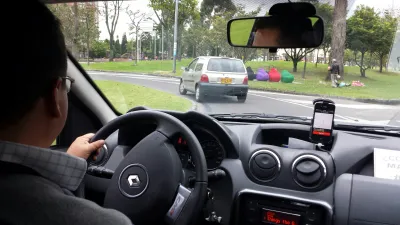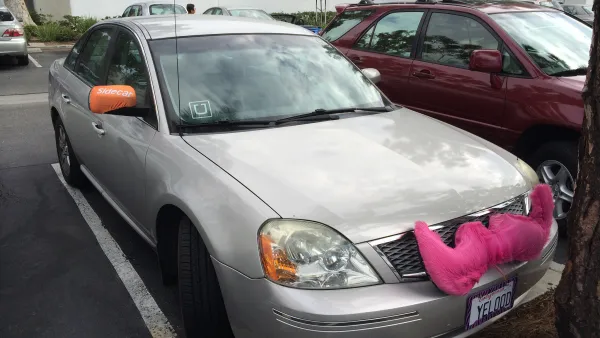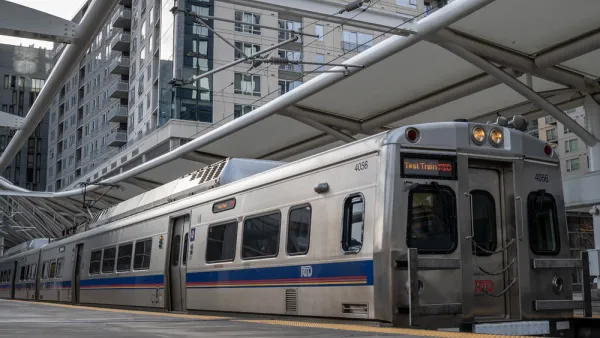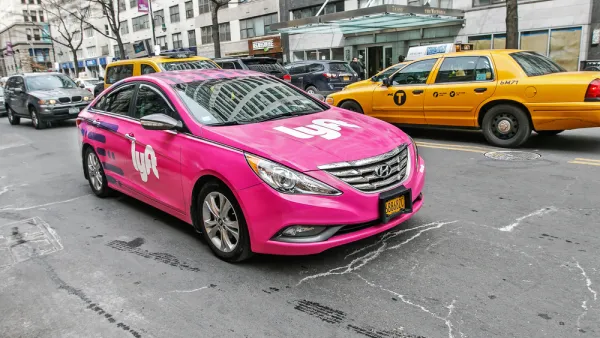The train ride from Summit, New Jersey to Penn Station takes 45 minutes. The real problem: getting to the train. By subsidizing Uber rides to and from the local station, the town hopes to avoid building another expensive parking lot.

Solving the first mile-last mile problem has long occupied a top spot on transit planners' to-do lists. How can we increase transit use by making it easier for people to get from their homes to the nearest station?
The question may have less to do with boosting transit and more to do with making commuters' lives easier.
In the town of Summit, New Jersey, commuters who take the train to New York City can't find anywhere to park their cars for the day. From Priya Anand's piece: "Commuters buy parking permits, but are not assigned spaces, and often waste 15 to 20 minutes prowling for a spot in the morning [...] But building a new parking lot to address commuter demand would be a long-term, multimillion-dollar endeavor."
One answer: subsidize Uber rides to and from the station. "Priced at $2 each way, the rides would cost commuters the same as an all-day parking permit. The deal would reduce demand for Summit's hard-to-come-by parking spaces and create a steady pool of demand for Uber."
Clearly interested in extending its service to car-dependent suburbanites, Uber has agreed to a six-month pilot program serving 100 residents. Summit's city administrator estimates that the program would only cost about $167,000 per year, a tiny fraction of what it would take to install parking.
To be fair, "Summit is about 6 square miles, which keeps ride-hail fares within its boundaries relatively inexpensive." And far more than 100 residents may eventually want to use the program. But Uber has plenty of reasons to make this kind of initiative work: not only does rideshare fully enter the suburbs; daily commuters also offer steady business, unlike weekend partygoers, occasional visitors, and other Uber staple clients.
FULL STORY: How Uber Plans To Conquer The Suburbs

National Parks Layoffs Will Cause Communities to Lose Billions
Thousands of essential park workers were laid off this week, just before the busy spring break season.

Retro-silient?: America’s First “Eco-burb,” The Woodlands Turns 50
A master-planned community north of Houston offers lessons on green infrastructure and resilient design, but falls short of its founder’s lofty affordability and walkability goals.

Delivering for America Plan Will Downgrade Mail Service in at Least 49.5 Percent of Zip Codes
Republican and Democrat lawmakers criticize the plan for its disproportionate negative impact on rural communities.

Test News Post 1
This is a summary

Test News Headline 46
Test for the image on the front page.

Balancing Bombs and Butterflies: How the National Guard Protects a Rare Species
The National Guard at Fort Indiantown Gap uses GIS technology and land management strategies to balance military training with conservation efforts, ensuring the survival of the rare eastern regal fritillary butterfly.
Urban Design for Planners 1: Software Tools
This six-course series explores essential urban design concepts using open source software and equips planners with the tools they need to participate fully in the urban design process.
Planning for Universal Design
Learn the tools for implementing Universal Design in planning regulations.
EMC Planning Group, Inc.
Planetizen
Planetizen
Mpact (formerly Rail~Volution)
Great Falls Development Authority, Inc.
HUDs Office of Policy Development and Research
NYU Wagner Graduate School of Public Service





























